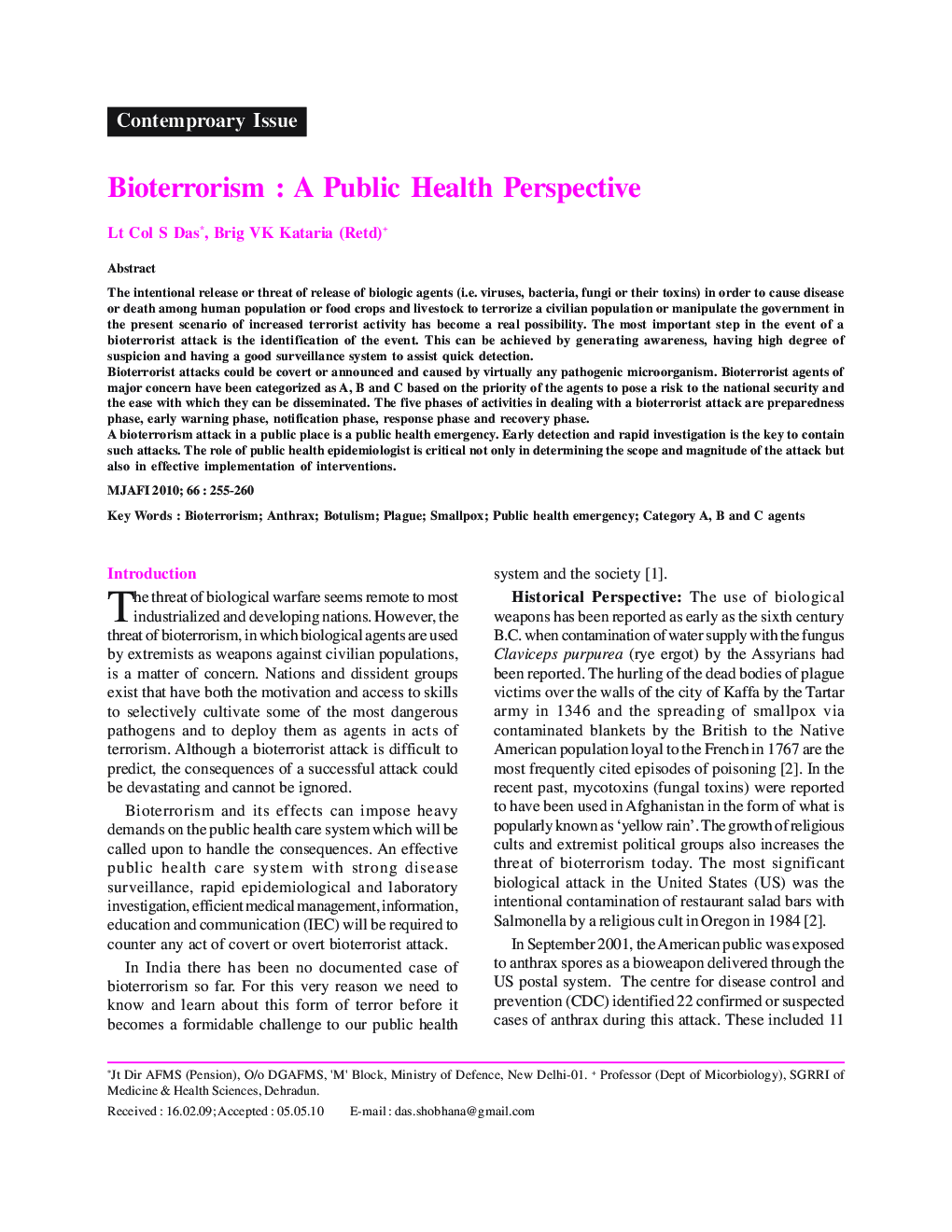| Article ID | Journal | Published Year | Pages | File Type |
|---|---|---|---|---|
| 3161814 | Medical Journal Armed Forces India | 2010 | 6 Pages |
The intentional release or threat of release of biologic agents (i.e. viruses, bacteria, fungi or their toxins) in order to cause disease or death among human population or food crops and livestock to terrorize a civilian population or manipulate the government in the present scenario of increased terrorist activity has become a real possibility. The most important step in the event of a bioterrorist attack is the identification of the event. This can be achieved by generating awareness, having high degree of suspicion and having a good surveillance system to assist quick detection.Bioterrorist attacks could be covert or announced and caused by virtually any pathogenic microorganism. Bioterrorist agents of major concern have been categorized as A, B and C based on the priority of the agents to pose a risk to the national security and the ease with which they can be disseminated. The five phases of activities in dealing with a bioterrorist attack are preparedness phase, early warning phase, notification phase, response phase and recovery phase.A bioterrorism attack in a public place is a public health emergency. Early detection and rapid investigation is the key to contain such attacks. The role of public health epidemiologist is critical not only in determining the scope and magnitude of the attack but also in effective implementation of interventions.
